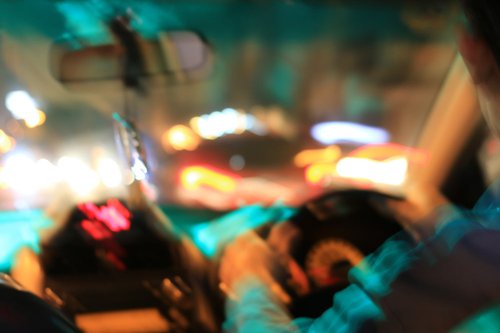The Role of Technology in Preventing Impaired Driving

Technological advancements like breathalyzers and ignition interlocks revolutionize impaired driving prevention. While effective, these tools are not infallible, making experienced legal representation vital for those accused of DUI.
Key Takeaways
- Technology like breathalyzers and oral fluid testing helps detect impairment, while ignition interlocks reduce recidivism.
- Police use tools like license plate readers and traffic cameras to enforce DUI laws.
- DUI prevention technologies have limitations, underscoring the importance of legal representation for those accused.
People have turned to technology to prevent criminal activity since ancient times, as evidenced by a 4,000-year-old pin-tumbler-style lock to secure valuables invented by ancient Assyrians. While various local and national governments around the world passed laws against drunk horseback and carriage riding starting in Medieval times, we are not aware of any technological innovations used to deter or catch impaired offenders. However, with the advent of the automobile, authorities started seeking a technological edge to combat drunk driving beginning in the 1920s, though these efforts were slow to prove effective.
Alexei Zaitsev , DUI lawyer at MassTsang: “DUI prevention technologies have evolved significantly, but understanding their limitations is key to building a robust defence."
With technology playing a significant role in driving under the influence (DUI) arrests and convictions, the Greater Toronto Area DUI defence lawyers of TorontoDUI are intimately familiar with the technologies police use to deter and catch impaired drivers. To further educate our Knowledge Centre readers about DUI in Canada, let's examine the role of technology in preventing impaired driving.
The Drawn-Out Evolution of the Breathalyzer
When Canada passed its first drunk driving law in 1921, there was no reliable way to test a driver's inebriation, which made securing a conviction in court a subjective exercise that often resulted in acquittal. The U.S. faced a similar situation, which led to ongoing efforts by American scientists to uncover an effective means of easily testing blood alcohol levels. At least one working device was profiled in a science magazine in 1927, but no police agencies adopted the methodology or device. In 1938, Indiana State Police started testing “The Drunkometer," which determined the ratio of carbon dioxide and alcohol in the breath to compare it with a pre-mixed alcohol solution. An equivalizing formula was then used to establish the blood alcohol content. By the 1940s, numerous police departments across America were using the Drunkometer and similar devices to catch and prosecute drunk drivers, but Canadian police did not use them.
Robbie Tsang , DUI lawyer: “From breathalyzers to ignition interlocks, these tools not only deter impaired driving but also serve as crucial evidence in court."
The much more effective breathalyzer that police worldwide rely on today was invented and trademarked in 1953. While Ontario police started testing the breathalyzer in 1954, it did not garner widespread use for DUI enforcement until Canada amended the Criminal Code in 1969. The amendments empowered police to demand breath samples from suspected impaired drivers and included legal limits for blood alcohol concentrations. The photometry and oxidation sensing technologies used in the original breathalyzer have been significantly upgraded over the years, allowing for the development of mini breathalyzers that police use for roadside testing. However, because of their limited calibration, police cannot use these devices to prove impaired driving in court. Instead, they determine whether a driver needs further impairment screening.
Question: What role does technology play in preventing impaired driving?
Answer: Technology plays a pivotal role in preventing impaired driving through tools like breathalyzers, oral fluid testing devices, and ignition interlocks. These technologies detect impairment, reduce recidivism, and assist police in proactive DUI enforcement.
The Rise of Technology in Drug Impairment Screening
When drug-impaired driving started emerging as a traffic hazard in the 1960s, police lacked a reliable means of testing drivers for impairment. Over the ensuing decades, North American police primarily relied on standardized field sobriety testing and blood sampling to secure convictions for drug-impaired driving. However, the effectiveness of using these for evidence was limited, as field sobriety testing is subjective, and some drugs can remain in the bloodstream for days and even weeks. This allowed some defendants to successfully argue that there was no way to prove they were high while driving.
The need for better drug impairment screening became more acute when Canada legalized marijuana in 2018. Fortunately, researchers had developed accurate oral-fluid testing devices by this time that quickly identify the presence of drugs in a driver's system. Today, many Ontario Provincial Police and RCMP officers carry approved roadside drug screening equipment, though officers still use roadside sobriety testing to assess potential impairment.
Evolution of DUI Prevention Technologies
| Era | Key Development | Significance |
| 1920s | Introduction of early drunk driving laws in Canada. | First legal measures to combat DUI. |
| 1950s | Invention and adoption of the breathalyzer. | Revolutionized DUI detection. |
| 1980s | Development of ignition interlock devices. | Addressed DUI recidivism. |
| 2010s | Advances in oral fluid testing devices. | Enhanced drug impairment detection. |
| 2020s | Integration of AI and traffic enforcement cameras. | Improved real-time DUI monitoring. |
The Technological Cure for Impaired Driving Recidivism
Impaired driving has long been marked by a high recidivism rate worldwide, in which some drivers end up with multiple DUI arrests, and repeat DUI offenders tend to cause a significant portion of impaired driving accidents. To prevent those who've been arrested for DUI from repeating the offence once they've legally resumed driving, researchers developed the ignition interlock device in the late 1980s. The device does not allow a driver to start their car until they provide a breath sample. If a fuel cell sensor in the device detects blood alcohol concentration (BAC) levels above a specific limit — 0.002 in Ontario — it keeps the ignition locked to prevent the driver from driving. These devices can also require drivers to provide random breath samples while driving. Failure to provide one, or a sample exceeding the BAC limit, will activate an alarm that causes the car's lights to flash and horn to honk until the driver turns off the ignition.
Heather Spence , DUI lawyer at MassTsang: “Legal outcomes depend on how evidence from these technologies is presented and challenged."
As with many technologies, it took time for ignition interlock systems to become widely adopted. With studies showing that the device reduces DUI recidivism, it is now widely used worldwide as a tool to prevent repeat impaired driving. Most Canadian provinces — including Ontario — impose mandatory ignition interlock conditions on those convicted of DUI.
Other DUI Prevention Technologies in Use
Numerous other technologies currently in use or in development can help prevent impaired driving. If you're wondering whether “there's an app for that," many available apps are dedicated to reducing impaired driving. You can download an app to test your own BAC to ensure that you are sober enough to drive. Or, should you want to help the police enforce DUI laws, you can download an app that lets you report suspected impaired drivers in real time.
Technological tools the police use to help them identify impaired drivers and enforce impaired driving laws include:
- Automated license plate readers that scan plates for suspended or revoked licenses for previous DUI offences.
- Software that helps them manage roadside sobriety checkpoints by logging stops and test results.
- Software that analyzes traffic patterns to identify DUI hotspots where officers should be more proactive at DUI enforcement.
- Traffic enforcement cameras with software that detects erratic driving patterns that could suggest impairment.
Key DUI Prevention Technologies and Their Roles
| Technology | Purpose | Impact |
| Breathalyzer | Detects blood alcohol concentration (BAC) through breath samples. | Helps police determine if further screening is needed. |
| Oral Fluid Testing Devices | Screens for drugs in a driver's system through saliva samples. | Provides quick and accurate drug impairment screening. |
| Ignition Interlock Device | Prevents vehicle operation if driver's BAC exceeds a set limit. | Reduces impaired driving recidivism. |
| Automated License Plate Readers | Identifies vehicles associated with DUI offences or revoked licenses. | Enhances proactive DUI enforcement. |
| Traffic Enforcement Cameras | Detects erratic driving patterns that may indicate impairment. | Allows real-time identification of impaired drivers. |
If you want to ensure that technology doesn't play a role in your DUI arrest, the best recourse is to simply not drive while impaired. However, if police arrest you in the Greater Toronto Area for DUI, know that their technology isn't infallible, nor are they. Thus, if arrested for DUI, you should always secure the legal counsel of an experienced DUI criminal defence lawyer, like those at TorontoDUI .
